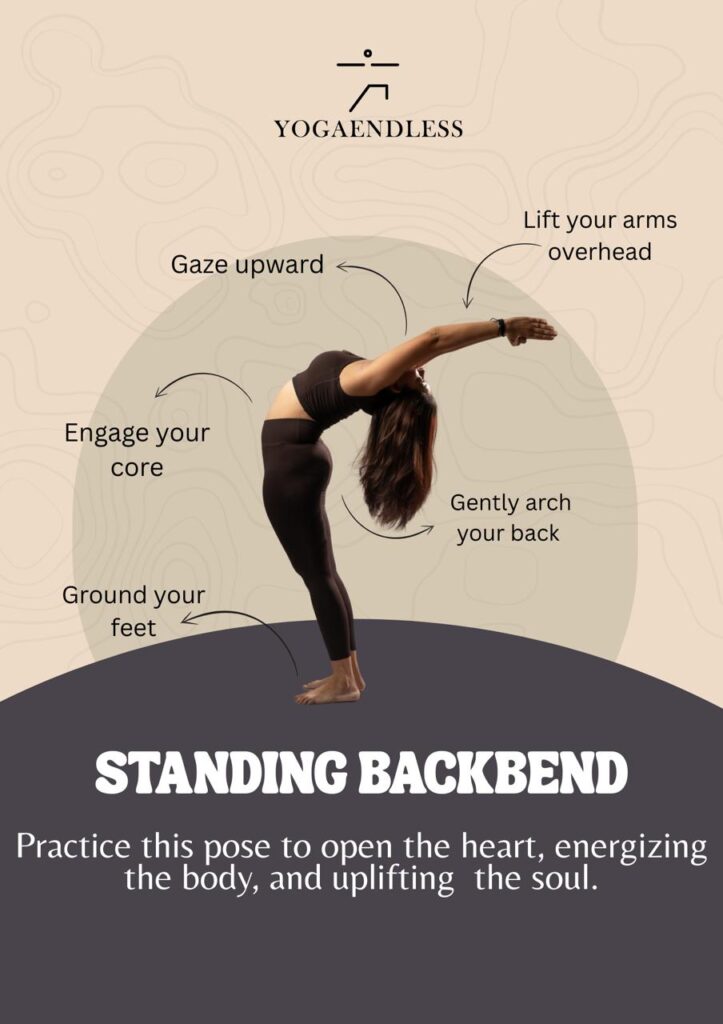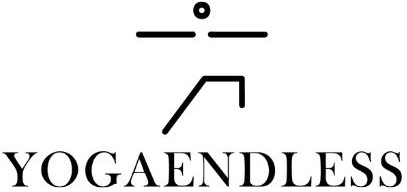Standing Backbend (Anuvittasana): A Gentle Gateway to Heart Opening
Anuvittasana, commonly known as the Standing Backbend, is a beautiful pose that energizes the spine, opens the heart, and awakens the body. Though it might look intense, it is actually a gentle backbend that can be practiced by beginners with proper alignment and awareness.
Often used at the beginning of a yoga flow, this posture helps counteract the effects of sitting and slouching, promotes good posture, and brings a sense of lightness and upliftment.

What Is Anuvittasana (Standing Backbend)?
Anuvittasana is a Sanskrit term where:
Anu means “following” or “along with”, Vitta means “extension” or “bend”, Asana means “pose” or “posture”
In modern yoga practice, Anuvittasana refers to a standing, gentle backbend that begins from the foundational Tadasana (Mountain Pose) and transitions into a light arching of the upper spine while reaching the arms overhead. It is often practised as part of Surya Namaskar (Sun Salutations) or as a standalone heart-opener.
Rather than aiming for deep flexibility, this pose emphasises lifting through the chest, engaging the core and legs, and creating space in the spine.
Other Names for This Pose
Standing Backbend
Gentle Backbend
Upward-Facing Standing Pose
Standing Heart Opener
Mini Backbend (informal)
How to Do Anuvittasana (Step-by-Step Instructions)
- Start in Tadasana (Mountain Pose): Stand tall with feet hip-width apart, grounding evenly through both feet.
- Inhale and raise both arms overhead: Palms can face each other or be joined together. Keep shoulders relaxed.
- Engage your core and thighs: This protects your lower back and provides a strong foundation.
- Lift your chest and sternum upward: Allow the upper back to gently arch. Think of creating a long upward curve rather than pushing backward.
- Shift hips slightly forward: This deepens the backbend while keeping the spine safe.
- Gaze up toward your hands: Or keep the neck neutral if looking up strains it.
- Hold for 3–5 breaths: Continue lifting through the chest and grounding through the legs.
- To release: Inhale and slowly return to a neutral standing position.
Benefits of Anuvittasana (Standing Backbend)
- Opens the chest, lungs, and heart centre
- Improves spinal flexibility and posture
- Strengthens the back and leg muscles
- Reverses slouching from long periods of sitting
- Stimulates energy and reduces fatigue
- Enhances confidence and mood through heart-opening movement
What Not to Do (Common Mistakes)
- Don’t collapse into your lower back: Focus on lifting the chest rather than bending deeply.
- Avoid locking the knees: Keep a slight softness to prevent strain.
- Don’t drop your head back forcefully: This may cause neck strain. Keep the neck long and in line with the spine.
- Don’t rush: Move slowly with awareness and proper breathing.
- Avoid this pose if you have a back injury or consult a qualified instructor for modifications.
Lorem ipsum dolor sit amet, consectetur adipiscing elit. Ut elit tellus, luctus nec ullamcorper mattis, pulvinar dapibus leo.
Anuvittasana is a reminder that heart-opening doesn’t require extreme flexibility — it simply asks for presence, breath, and a willingness to expand. This standing backbend is perfect for waking up the body, opening the chest, and gently inviting more space into your day.
Root into the earth, rise through the spine, and open to possibility.
